

These workshops were co-sponsored by Lincoln Public Schools and the UNL Center for Science, Mathematics, and Computer Education. Educational materials have been provided by NASA.

|
These workshop activities are suitable for students in grades 4-12.
Teachers will participate in the activities and receive handouts to learn
how to replicate these activities in their classrooms. Activities support
the National Science Standards. Forming teams, participants will arrive
at a team definition for "life". Teams will then examine three samples
to determine if life exists in the sample as defined by the team. Discussion
will follow and include examples of the definition of "life" from students
as young as kindergarten. Teams will also observe recently discovered
"alien creatures". Each team will write a description of the alien creature
and then identify creatures observed by other teams based on the written
descriptions. Discussion will include having students realize the importance
of keeping accurate journals and improving writing skills when describing
unfamiliar life forms. Integrating science, language, and mathematics,
participants will also find out how to extend this learning experience
to include writing the scientific name for the alien creature. |
More background information on Peggy can be found here.

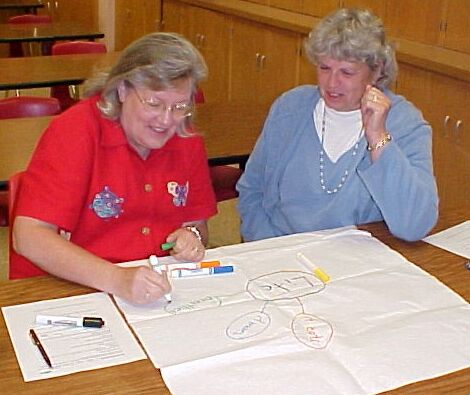 | Participants were broken into groups of two or three and first asked to detail their definition of life. The definition was sketched out on large sheets of poster paper which were then taped up on the wall. |
Participants were then given three samples (which they could examine with a magnifying glass) and asked whether or not any of the samples met their definition for life. The exercise was then repeated with water being added to the samples (some of which bubble and some have particles which dissolve). |
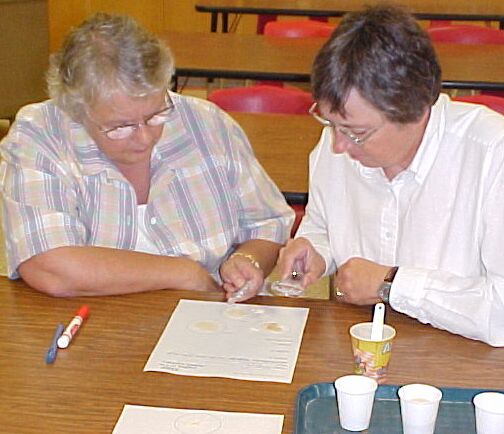 |
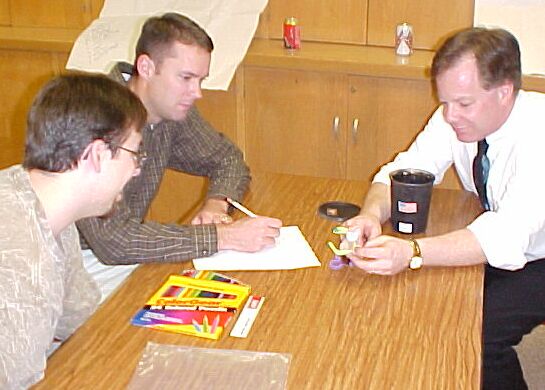 | The activity then shifts to the distribution of alien dolls. Each team recieves a doll and is asked to write up a description of the characterisitics of the alien (out of sight of the other teams). Rulers are available for making measurements on the alien. The creatrues are then put away and descriptions are switched between groups. Participants are then asked to draw a picture of another group's alien doll based on their written description. Thus, this is largely an activity emphasizing the importance of thorough record keeping in science. More information on the alien creatures can be found here. |
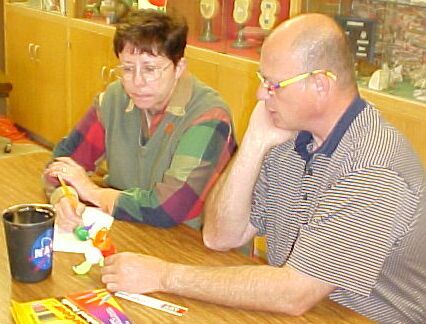 | 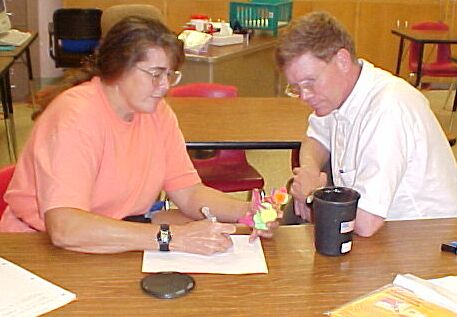 |
